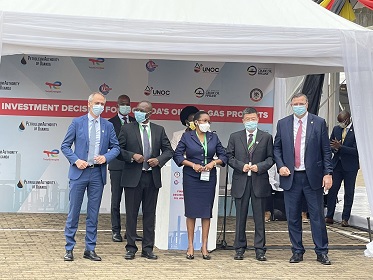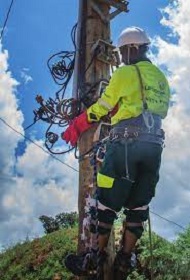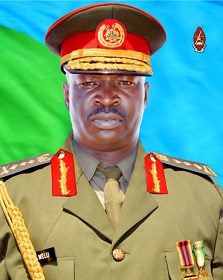
By Marvin Ocol
Petroleum economist and lawyer Musherure James R says a FID (Final Investment Decision) is the point in the planning process for capital intensive projects when the decision to make major financial commitments is taken. At the FID point, major contracts are signed and equipment orders are placed.
He notes that this is when the oil is at the takeoff stage but the most important period especially for businessmen is not when oil starts flowing but after FID when construction starts.
“FID is like that beautiful girl whose suitors find without any matchmakers. These are some of the companies that will set up shop in Uganda after FID with no marketing or brokers claiming to be bringing investors. Some are worth over $100bn,” Musherure argues.
For the government, Musherure says FID brings the final process which is production closer since it’s usually 3 to 5 years of construction before anyone can produce oil. So, he notes that FID is the much needed breath of life in Uganda’s oil and gas industry.
“We are now at the takeoff stage,” Musherure says and adds: “Therefore the most important and interesting period for any business man and any person interested in the oil and gas industry is not when oil is flowing but after FID has been taken so that they can earn money directly through supply of goods and services.”
According to Musherure, Uganda government will be earning approximately $2bn dollars annually when the oil starts flowing (this is almost equivalent to all the taxes paid by Ugandans ). However, when oil is flowing , all money will be going to government coffers.
What does FID mean for Ugandans?
Once it’s taken, Musherure says, it means $10bn to 15 bn will be invested in the Uganda for the development phase and actual construction works will commence.
“This presents huge opportunities for companies and citizens to supply all kinds of goods and services. The investor has to make sure all lose ends are tied before he can commit to investing such huge amounts; thereby sanctioning the project (FID). Engineering and Designs for the big oil installations. Putting in place necessary infrastructure like roads, water electricity. Selection of the major contractors to build these oil installations and Selection key suppliers like manufacturers of pipes and oil rigs. These processes include; 1. Putting in place the necessary Legal and governing framework (e.g intergovernmental Agreements and Acts passed both in Tanzania and Uganda to handle the trans-boundary pipeline) 2. Environment Impact assessments for the project 3. Land Acquisition.”
Given the capital intensive nature of the development phase (Uganda’s case it will be between $10-15 billion which is about 10 times the biggest project Uganda has ever had. Karuma dam cost about $1.2bn-1.7), Musherure says several processes are undertaken before any investor can commit.
Musherure adds that Uganda has now entered the second phase and most expensive phase of the oil industry which is the development, since it explored and discovered 6.5bn barrels of oil (1 =159 litres)
“An oil project undergoes mainly 3 stages: 1. Exploration; here you are trying to find oil. 2. Development; after finding the oil , this phase includes setting up of oil installations/infrastructure to extract 3. Production; involves the actual removing or producing the oil,” Musherure says.
According to energy Ministry Permanent Secretary Eng. Irene Batebe, the FID means that “funds have been mobilized and are available for the project to commence”
Musherure and Batebe’s take come following an announcement by TotalEnergies of USD 10 billion in Uganda’s oil and gas projects.
The announcement at the Kololo Ceremonial grounds means that major works in the Tilenga, Kingfisher and the EACOP can now take off.
President Yoweri Museveni and Tanzania Vice President Idor Mpango graced the historic announcement.






